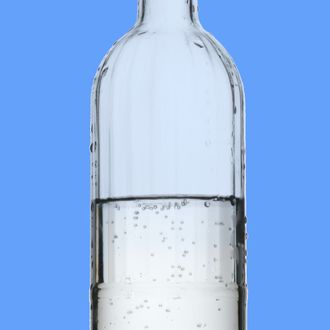
After not drinking seltzer for a while, I misremembered it as being painfully fizzy — just too bubbly — so I started writing a contrarian essay to that effect. I reached out to my most seltzer-loving friend, Lindsay Robertson, for a line or two of counterargument, but what she said put my own argument to shame, so I’m presenting it here instead. I also refreshed my memory during our exchange, and I was reminded that seltzer is and always has been good.
Edith Zimmerman: Lindsay, why do you love seltzer?
Lindsay Robertson: I think our other friend B. might actually be more of a seltzerhead than I am. She introduced me to the Facebook group “Now Fizzing” and regularly posts there.
That said, I can’t go a single day without flavored seltzer. Whenever I go somewhere, the first thing I go about doing is obtaining it.
I get what you mean about it being too fizzy to drink. I didn’t drink anything carbonated before I got into LaCroix in 2014. I complained that anything carbonated would “hurt my mouth”! (Seltzerheads complain that LaCroix isn’t fizzy enough, so maybe that’s how it ended up being my gateway seltzer.) Lured in by the flavors, I soon became a seltzer fanatic.
Now I drink seltzer (usually Polar, because they sell it at the grocery on my block) MIXED WITH COLD WATER out of a large aluminum thermal water bottle all day and all night. I don’t remember when I started mixing it or why, but it was probably after reading one of those articles about what it can do to tooth enamel. The dentists in those articles all say that if you just mix it with a little water, you can bring the pH down and it will be fine. I probably drink half-seltzer/half-water. Lately, at night, when I want a “treat,” I pour a glass of pure seltzer. Hahahaha, that’s my treat!!
Also, before I drank seltzer all day long, I drank water all day long. I was very, very into water. I still bring a water bottle with me even for half-hour errands. I should probably get something checked!
Oh, and I know there’s a difference between seltzer, club soda, and sparkling mineral water, but in a million years you could not get me to learn what it is or care about it.
A few days after our email exchange, Robertson and I shared a couple bottles of Polar’s Blackberry Clementine seltzer (we used to drink a lot of wine together). She joked that it was “seasonal,” which I thought was funny, although I now realize that it actually is. It was also delicious; I don’t know what I was thinking. On Thanksgiving I was introduced to the magic of glamorous, salty seltzer — specifically Vichy Catalan “Genuina” Natural Sparkling Mineral Water — which another friend buys by the case. I keep thinking about an almost throwaway line on the Vichy Catalan website: Its water “has even been found to have antidepressant effects due to its lithium content.”
Oh, and for the record: Seltzer is generally water that’s been carbonated, soda water is water that’s been carbonated and given added minerals, and sparkling mineral water is water that’s naturally carbonated and naturally contains minerals (often sodium, calcium, and/or magnesium).
I asked seltzer historian Barry Joseph, author of the new book Seltzertopia: The Extraordinary Story of an Ordinary Drink, for his thoughts on these differences and why they’re so hard to keep in mind.
“First of all, thank you for talking about seltzer,” he said. “Welcome to the age of effervescence.” He went on:
For many people, there’s certainly a drive to try to pin down what seltzer is and isn’t. Anyone who does that, though, comes up against the same problem: The lines aren’t fixed. The boundaries between what is and what isn’t seltzer change, depending on who you’re talking to, where you are in the world, and when in time you’re talking to them. At the end of the day, though, this push to define it — to lock it down — is part of what makes seltzer so great: It’s so iconically simple, and yet we keep bringing meaning to it in different ways, over time, and in different places.
He also gave me a more detailed description of the four phases of seltzer’s development, from its origins in a tiny spa town in Germany up through our modern-day seltzer-mania. But maybe that’s better summarized in his book, which he describes as “a quest to define what seltzer is, to learn how to listen to it, and to let it tell us what we need to hear.”




